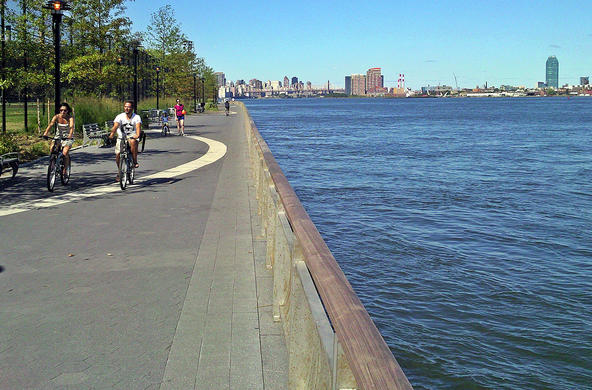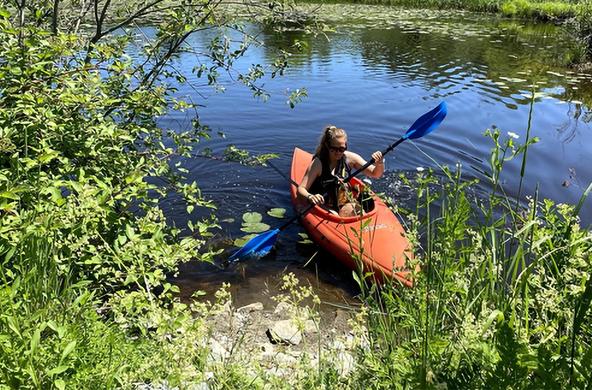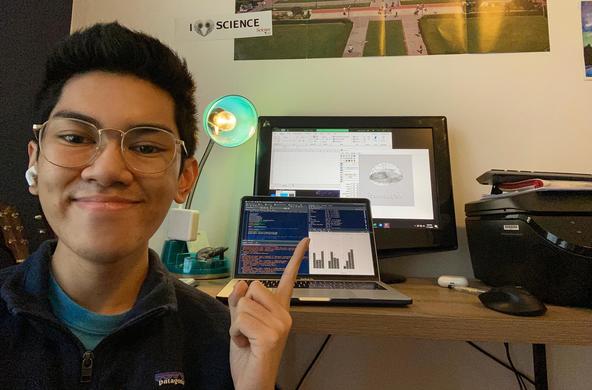Considering my scientific career thus far, the Research Experiences for Undergraduates (REU) program at Cary Institute is certainly one of the highlights.
I have been a research assistant in various labs and worked with an assortment of people since I was in 11th grade. I am from Syracuse, New York, and while in high school, I worked in a forest ecology lab at nearby State University of New York Environmental Science and Forestry (SUNY ESF), sorting leaf litter and soil samples. It was my first taste of research, and I was pleasantly surprised by how much I liked it.
I had always been a social person, and for the longest time, when people asked me what I wanted to do when I grew up, I would say, “I’m not sure, but definitely work with people”. Therefore, sitting in a lab amongst lab benches, doing the silent, methodical task of sorting leaf litter into piles seemed far from those initial convictions.
However, since that point, I have yet to stop on this path of research and furthering my understanding of the natural world.

Since starting college, I dabbled in more qualitative research, analyzing surveys to understand public perceptions of burning woody biomass as a heat source. I then went back to quantitative research, analyzing soil particle size to build understanding about how clay soils retain carbon.
It is important to note while telling this story of my formation as a scientist that the natural environment has always been extremely important to me.
I spent my childhood playing outside and learning the local flora and fauna from my mother and grandfather. I didn’t know until I was much older that you could have a career in ‘the environment’. Once I learned that, the world opened up to me a bit more, in terms of the kinds of opportunities available and paths that my life could take.

The project that I am working on this summer with Cary scientists Drs. Emma Rosi and Steve Hamilton is the first independently-driven science project that I have undertaken.
This summer, I am diving into a question and project entirely of my own devising. That question is: Has aquatic stream moss cover changed over the last 50 years at the Hubbard Brook Research Forest?
At the start at this program (May 20, 2019), I had a very minimal understanding of both moss and stream ecosystems. Over these last four weeks, I have enjoyed reading and gathering all the information I can about these interesting topics. I can now confidently and excitedly share that aquatic moss plays a crucial role in stream ecosystems, offering habitat for invertebrates and influencing current dynamics and streambed stability (Stream Bryophyte Group 1999).
Understanding how moss dynamics have changed over the last 50 years will help us understand how aquatic moss in temperate streams could be impacted by climate change. In this project, I will be analyzing moss surveys conducted in the summer of 1969 (50 years ago!) and 2000, along with my own surveys this summer, to demonstrate how the moss has changed.
I’m very excited for the summer and the opportunity to delve further into this project. A sneak peek: from a preliminary view, it looks like aquatic moss has changed quite a bit since 1969!

Olivia Vought, a student at the University of Vermont, is part of Cary Institute's 2019 Research Experiences for Undergraduates (REU) cohort. The REU program, supported by the National Science Foundation, gives undergraduate students the opportunity to participate in hands-on research projects alongside scientist mentors. This summer, Olivia is working with Cary scientists Drs. Emma Rosi and Steve Hamilton.
Bibliography
Campbell J. 2004. Hubbard Brook Experimental Forest USGS 40ft contours: GIS Shapefile. Environmental Data Initiative. https://doi.org/10.6073/pasta/58cf9c83e11301e282d2aa5e908fc3c2. Dataset accessed 6/17/2019.
Campbell J. 2016. Hubbard Brook Experimental Forest Watershed Boundaries: GIS Shapefile. Environmental Data Initiative. https://doi.org/10.6073/pasta/58cf9c83e11301e282d2aa5e908fc3c2. Dataset accessed 6/17/2019.
Campbell J. 2016. Hubbard Brook Experimental Forest Hydrography: GIS Shapefile. Environmental Data Initiative. https://doi.org/10.6073/pasta/64342b49f66a38f0300bd964616aa446. Dataset accessed 6/17/2019.
Stream Bryophyte Group. 1999. Roles of Bryophytes in Stream Ecosystems. Journal of the North American Benthological Society 18:151-184.






